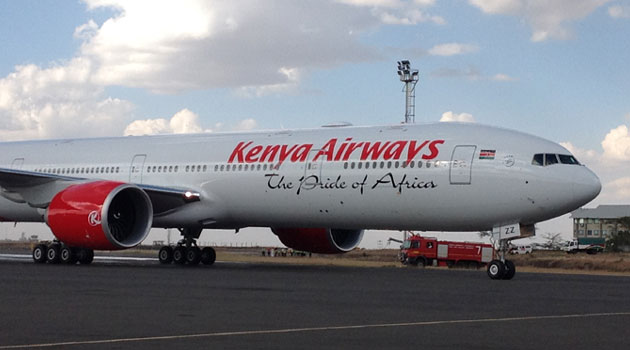A Kenya Airways plane was forced to make an emergency landing in Dar es Salaam after one of its engines caught fire mid-air, thus avoiding a disaster.
All the 142 passengers and 10 crew members landed safely but the near-disaster has exposed the laxity at the national airline.
For instance, the duty manager at KQ’s Operations Control Centre, who should have assisted the crew in the event of such an emergency, did not have the plane’s flight plan.
PRECAUTION
In fact, he did not know the location of the plane, registration number 5Y-KZD, when he advised the pilot to return to the Jomo Kenyatta International Airport (JKIA).
KQ downplayed the February 12 incident involving a Boeing 787 Dreamliner en route to Johannesburg, South Africa, saying the plane’s flight deck only showed that there was an issue that made the pilots take precaution.
“The crew shut down the engine as per procedure and diverted to Dar es Salaam. Our engineers travelled to Dar es Salaam to assess the engine and determined that it needed to be changed,” CEO Sebastian Mikosz told the Nation at that time.
However, an internal investigative report by the airline’s safety office, a copy of which the Nation has obtained, says that the left engine caught fire, forcing the pilots to shut it down and ask for an emergency landing.
CLIMBING OUT
The plane had arrived in Nairobi from New York, US, at 7am as flight KQ 003. It was then deployed to OR-Tambo Airport at 1:05pm as flight KQ 762.
The flight time from JKIA to OR-Tambo is five hours. However, upon climbing out of JKIA, the crew received a warning that one of its engines was overheating.
It then changed to a fire warning immediately after reaching a cruising attitude of 38,000 feet, forcing the pilots to initiate emergency procedures.
“On completion of the first four checklist memory items for FIRE ENG L, the fire warning ceased. They did not discharge the fire bottles as the fire warning had stopped,” says the report.
“The crew then completed the remainder of the checklist items and opted to divert to the nearest suitable airport, which was Dar-es-Salaam (HTDA),” it adds. The plane landed in Dar es Salaam at 1:40pm, 35 minutes after it took off from Nairobi.
DREAMLINERS
The plane has two General Electric GEnex engines and is just four years old. It is one of KQ’s seven Dreamliners.
Notably, the engine that caught fire had been reinstalled just seven months earlier, after being taken back to the manufacturer for repairs.
All B787 Dreamliners have engine fire suppression systems. Besides, as a twin-engine aircraft, a B787 has an extended twin-engine operations (ETOPS) rating of 330 minutes, which means it can fly for five-and-a-half hours on one engine.
But what is likely to raise questions is that the plane’s crew could not contact KQ’s Operations Control Centre (OCC) in Nairobi directly, and had to use a third-party messaging channel.
“The report faulted the OCC for advising the pilot to return to Nairobi when they did not even know the exact location of the plane, and also for not having a checklist to refer to on the next course of action when an aircraft has an in-flight problem.”
The affected engine was flown to the US for repairs.
By Daily Nation



